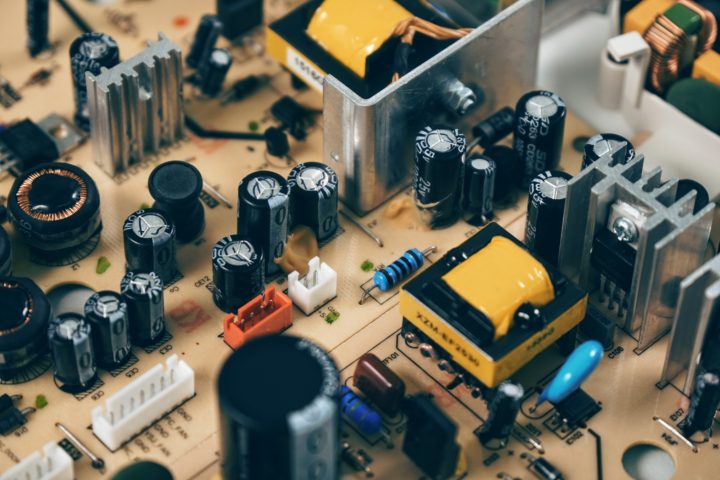The following contribution is from another author.
What Does the Term Transducer Signify?
The term transducer refers to an electrical appliance or device capable of converting energy from any one of its forms into another variation. In most cases, the gadget transforms a signal from one energy state or stage into another. For example, a transducer can turn electrical energy into its mechanical form. The conversion process is known as transduction.
Transducers find an application and get utilized in and at the boundaries of control systems, automation, and measurement. The electrical device performs its functions and actions for a specified number of situations and circumstances. For instance, it does so when a particular electrical signal or energy gets converted and transformed. It can be from one form of some physical quantity to another. The latter parameter can consist of force, position, light, torque, motion, etc.
What Does the Term Sensor Signify?
A sensor is a particular category of the transducer. Its purpose and function are to receive a stimulus or signal from any physical system and respond to it. The electrical module produces or generates a signal that embodies and represents the arrangement’s information and data. It can get utilized by some other sort or kind of telemetry, control, or statistical system.
A sensor detects various events and alterations in the environment surrounding it. It then sends the gathered and deciphered information and material to other forms of electronics. In most cases, it is a computer processor. In other cases, the data can get interpreted by a human being.
What are the Different Kinds or Types of Transducers?
A transducer can be of various types and kinds depending on several bases or factors. The first classification can be on how the electrical device operates and the category of work it performs. In that instance, the two varieties or sorts of a transducer can consist of the following:
- Mechanical Transducer
A mechanical transducer works to convert a physical quantity and turn it into a mechanical one.
- Electrical Transducer
An electrical transducer works to convert a physical quantity and turn it into an electrical one.
A transducer can also get categorized into an input transducer and an output transducer. The basis of classification depends on the specific kind of job that the electrical device does. If you need to use this type of equipment for a construction project, you may want to check out Sentech’s linear variable displacement transducers to see how they can be essential.
- Input Transducer
An input transducer or a sensor takes and utilizes a specific form or version of physical energy and turns it into a signal that can get read. A microphone is an example of this category of the transducer. It receives the generated or produced sound waves and transforms them into an electrical signal. The latter can then get transported or moved via a connection or system of wire and directed towards the amplifier.
- Output Transducer
An output transducer or an actuator works in a complete opposite way of that of an input transducer. It takes and utilizes electrical signals and transforms them into another form or kind of energy. A lamp is an example of this category of the transducer. It receives electricity and turns it into light energy.
What are the Different Kinds or Types of Sensors?
A sensor can get categorized into various types. A few of these kinds or sorts can consist of the following:
- Position Sensor
A position sensor measures the distance that a body travels from its starting or reference point. It computes the angular or linear position by comparing it with a fixed location. Additionally, it can detect the presence of an object.
- Strain Gauge
A strain gauge measures strain or force. The sensor resistance varies with the degree of force applied to it, resulting in diverse electrical outputs. It utilizes this method to assess tension, pressure, and weight.
- Flow and Level Switch
A flow and level switch measures dry or liquid materials using current, relay, or millivolt outputs.
- Vibration Sensor
A vibration sensor measures the frequency and amount of vibrations in a machine, equipment, or system. The results can get used to find imbalances and various issues and correct them.
- Photo Optic Sensor
A photo optic sensor determines the presence and distance of an object by utilizing a photoelectric receiver and a light transmitter.
- Humidity Sensor
A humidity sensor calculates the precise humidity condition of the air at any place and at any time.
- Force Sensor
A force sensor measures the values of force, load, strain, and compression.
- Pressure Sensor
A pressure sensor controls diverse electrical appliances and gadgets. Additionally, it can indirectly measure the speed and flow of a gas or fluid.
- Fluid Property Sensor
A fluid property sensor monitors the dynamic and direct relationship between various physical properties. It helps to determine the condition, quality, and contaminant in fluids.
- Piezo Sensor
A piezo sensor transforms a physical parameter like pressure or acceleration into an electrical signal. It can also compute the change in acceleration, strain, and pressure.
- Temperature Sensor
A temperature sensor measures the value and changes in temperature. It can be a solid, liquid, or gaseous matter. You can follow this link to find out more about manufactured temperature sensor products including Thermocouples, resistance temperature devices (RTDs), thermistors, and associated components and hardware.
What are the Points of Difference between a Transducer and a Sensor?
A sensor is a particular type of transducer that converts one form of energy into another. Nevertheless, the two have significant differences between them. Other than their functions, a few of their disparities consist of the following:
- Nature
Objectively speaking, a transducer is like a translator, while a sensor is like a detector.
- Components
A transducer has a sensor and a signal conditioning part. On the other hand, a sensor comes with no additional components.
- Performance Complexity
A transducer has a more complicated operation and working system. A sensor has a considerably lower performance complexity.
- Feedback System
A transducer can give back feedback to any desired system using the output device. It is possible after the end of the processing in the signal conditioning part. On the other hand, a sensor is incapable of doing so.
- Form of the Output signal
A transducer changes the form of the output signal to an electrical one every time. However, a sensor retains the format.
















